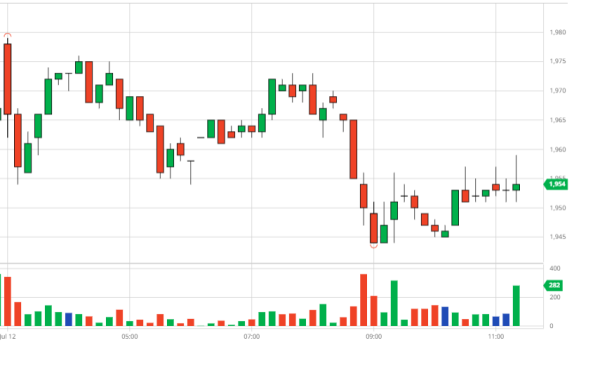The exchange rate continues to support Brazilians in boosting export coffee sales, despite the fact that crop harvests are currently being slowed down by unfavorable weather and an intensifying labor shortage…

Robusta chart London September 2022 session on 12/07/2022
At the end of the session, the price of Robusta coffee on ICE Europe – London continued to decline. The September spot term decreased by 12 USD to 1,954 USD/ton and the November delivery term also decreased by 12 USD to 1,951 USD/ton, significant reductions. Trading volume on average.
Similarly, the price of Arabica coffee on the ICE US floor – New York has a downward trend. September spot futures fell another 7.90 cents to 205.35 cents/lb and December futures fell another 7.85 cents to 202.75 cents/lb, very strong declines. Trading volume very above average.
The price of green coffee beans in the Central Highlands provinces decreased by 100-200 VND, down to range from 39,000 to 39,500 VND/kg.
The price of coffee futures continued to decline as the reais rate continued to decline, which supported Brazilians to promote the sale of new crop export coffee by the method of futures. US stocks fell, USD gained 1.27%, up at 1 USD = 5.4390 R $. As central banks tighten financial conditions, China grapples with the Covid-19 pandemic, and Europe remains engulfed in energy worries, with the risk of Russian gas supplies threatening, the prospect of a recession. Global recession is becoming accurate. The market speculates that the Fed will be more aggressive in raising the basic interest rate to control inflation at the upcoming policy meeting at the end of July. Never before have investors felt such heightened risk aversion as at this moment.
Meanwhile, the consultant-analyst Safras & Mercados reports that Brazilian farmers have only harvested about 48 percent of the crop so far, lower than the five-year average of 58 percent at the same time due to a labor shortage. Harvesting is increased and the weather is still not sunny, not really favorable for drying.
English (giacaphe.com)
